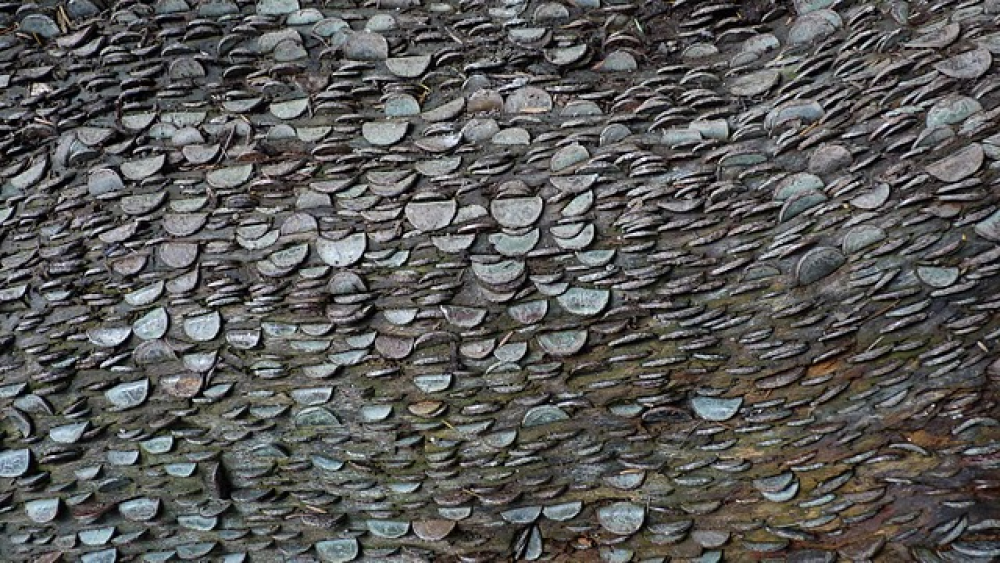If you’ve ever been out walking and seen a metallic, scaly tree trunk covered in coins, you’ve likely seen a wish tree. This product of folklore is thought to have been practiced for hundreds of years, granting wishes and “curing” physical ailments with each hammering of a coin into the trunk of a tree.
A common offering for wish trees is coins, which can be hammered with such enthusiasm that the tree trunk’s surface becomes transformed. This was remarked upon by Colonel Eddington following a 1927 visit to Isle Maree where he saw a wish tree “covered with metallic scales…something like what is depicted on a dragon”.
The exact meaning of the coins’ deposition varies, but generally centers around a theme of leaving behind a wish or physical ailment to be healed, such as a toothache. A similar practice has been seen in places such as Cornwall with the deposition of nails into trees, and like coins, they sometimes get swallowed by the trunk’s bark as the tree continues to grow.
Coins are a curious choice, too, carrying a real-world value that makes their deposition costly to the wisher. They are also impersonal to an extent, but some of the coins on wish trees demonstrate that a bit of thought often went into selecting just the right coin to hammer in.

A wish tree at Bolton Abbey looking a little overwhelmed.
“In some cases, the physical properties of a coin are harnessed or altered in order to foster both tangible and intangible links between depositor and deposit, from choosing coins of certain colours, denominations, years of mint, or commemorative design with personal significance, to scratching initials onto their surfaces,” explained historian Ceri Houlbrook in a 2015 paper.
“In [a] vast majority of cases, however, the coins are not altered or selected for any personal reasons, and yet through the act of depositing them into a coin-tree, they are transformed from alienable, mass-produced, homogenous, semi-disposable objects to personal items boasting metonymical links with their depositors.”
On the surface it’s a rather enchanting concept born of folklore to be transforming trees into dragons in a desperate bid to kick a toothache. However, if asked, the trees themselves would probably say they were less than charmed by the activity.
“Tree coins mean a mountain of trouble in our woodlands,” said the National Trust for Scotland on Facebook. “More people have been hammering coins into trees and stumps at Dollar Glen and The Hermitage due to a growing ‘fashion’ to make votive offerings for wishes. We wish you wouldn’t do it – especially to live trees as its harmful.”
Perhaps a tradition to avoid in future, then, but our species’ urge to attach human-made objects to structures out in the wide world is a widespread and enduring behavior. Today, another form of ritual deposition is a common sight in urban environments: love locks.
While the end goal is quite different, the practice shares similarities with the love lock tradition of attaching padlocks to bridges. The locks themselves may be mass-produced and impersonal, but it’s regularly observed that people may etch or paint initials or messages onto the love locks to impart some personal meaning and attachment.
Want our advice? It’s much cheaper wishing on a star.
Source Link: Spotted Coins Hammered Into A Tree Trunk? It’s A Centuries-Old Tradition